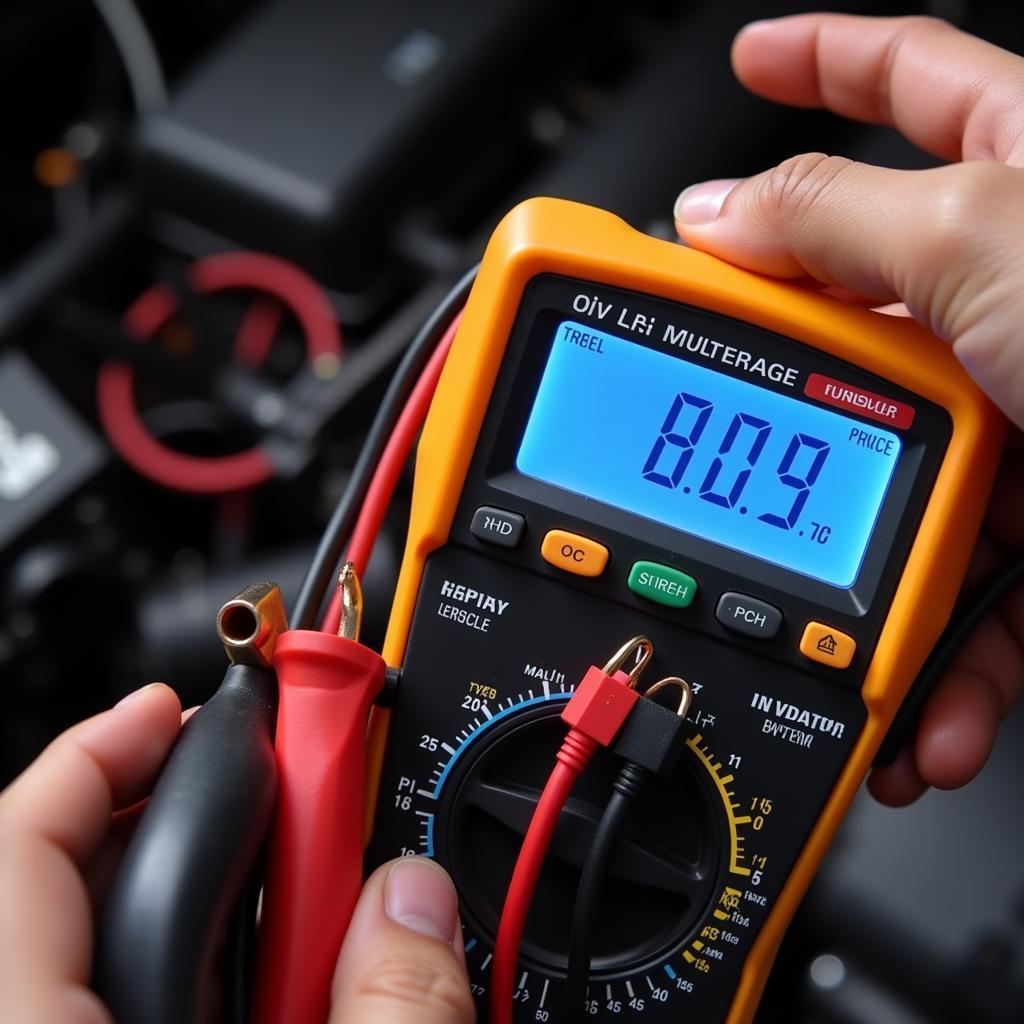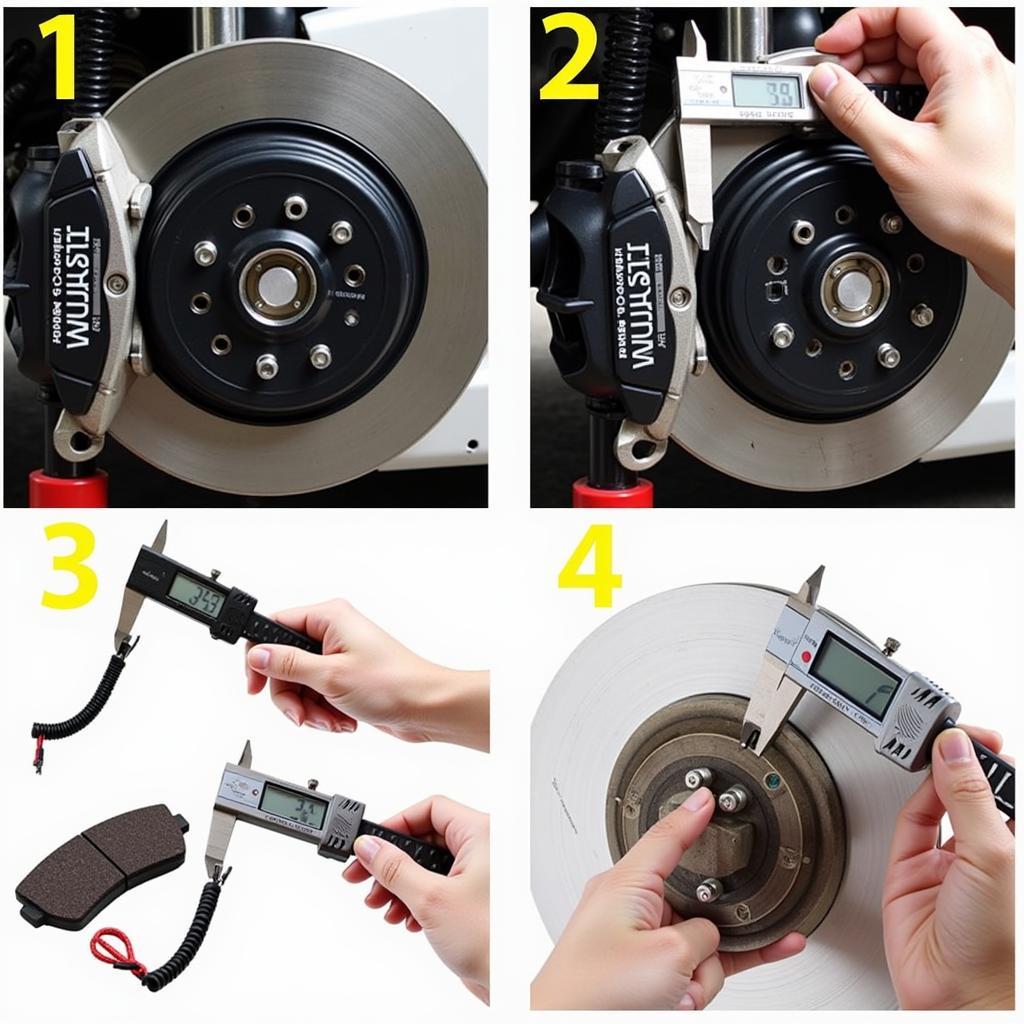A dead car battery is a frustrating experience. But before you rush to replace it, a car battery drain test with a multimeter can pinpoint the culprit. This guide provides a comprehensive overview of how to perform this essential diagnostic test, helping you save money and avoid future headaches.
Performing a car battery drain test with a multimeter is a straightforward process that empowers you to identify parasitic draws, faulty components, or simply a dying battery. This essential skill will save you time, money, and frustration down the road. Let’s dive into the details.
Understanding the Basics of a Car Battery Drain Test
Why is a Car Battery Drain Test Important?
A healthy battery is crucial for a reliable vehicle. A car battery drain test with a multimeter helps identify why your battery is constantly dying. It’s a simple yet powerful diagnostic tool. Is it a parasitic draw, a failing alternator, or simply an old battery reaching the end of its lifespan? This test will tell you.
What Tools Do I Need for a Car Battery Drain Test?
You only need a few tools: a digital multimeter and optionally, a test light. A multimeter with a min/max function can be incredibly helpful for catching intermittent drains.
What Safety Precautions Should I Take?
Always disconnect the negative battery cable first before working on any electrical components. Wear safety glasses to protect your eyes and ensure the car is parked on a level surface. Never touch both battery terminals simultaneously.
How to Perform a Car Battery Drain Test: A Step-by-Step Guide
- Gather your tools: Multimeter, (optional) test light, and owner’s manual.
- Prepare the vehicle: Park on a level surface, turn off the ignition, and remove the key.
- Disconnect the negative battery cable: This isolates the battery from the vehicle’s electrical system.
- Set up your multimeter: Select the DC amps setting. For most vehicles, the 10A range will be sufficient.
- Connect the multimeter: Connect the red lead to the negative battery terminal and the black lead to the negative battery cable.
 Multimeter Connected to Car Battery for Drain Test
Multimeter Connected to Car Battery for Drain Test
- Observe the reading: Note the amperage reading. A reading above 50 milliamps (0.05 amps) generally indicates a parasitic draw.
- Identify the culprit: If there’s a significant draw, systematically remove fuses one at a time, observing the multimeter reading after each removal. When the reading drops significantly, you’ve identified the circuit with the problem. Consult your owner’s manual to determine which components are on that circuit.
- Reconnect the negative cable: Once you’ve finished the test, reconnect the negative battery cable.
Troubleshooting Common Car Battery Drain Issues
What if the Draw is Intermittent?
Intermittent draws can be tricky. A multimeter with a min/max function can be very helpful in these situations. It will record the highest and lowest current readings over a period of time, allowing you to catch these elusive drains.
What if I Can’t Find the Source of the Drain?
If you’ve checked all the fuses and still can’t find the source, you may have a more complex electrical issue. It’s time to seek professional assistance. A qualified technician can utilize specialized diagnostic equipment to pinpoint the problem.
“Regularly performing a car battery drain test with a multimeter is a proactive measure that can save you from unexpected breakdowns and costly repairs,” advises John Smith, ASE Certified Master Technician. “It’s a simple test that everyone should learn.”
Conclusion
The car battery drain test with a multimeter is a valuable tool in every car owner’s arsenal. By following these steps, you can diagnose and often fix battery drain issues yourself, saving time and money. Don’t let a dead battery leave you stranded; empower yourself with this essential knowledge.
FAQ
- How often should I perform a car battery drain test? It’s recommended to test annually or if you notice signs of battery weakness.
- What is a parasitic draw? A parasitic draw is a constant drain on your battery even when the car is off.
- Can a bad alternator cause a battery drain? Yes, a failing alternator can prevent the battery from recharging properly, leading to a drain.
- What is a normal parasitic draw reading? Typically, a reading below 50 milliamps (0.05 amps) is considered normal.
- What should I do if my car battery keeps dying? Perform a car battery drain test and check your alternator. If you can’t find the issue, consult a qualified technician.
- Can I use a test light instead of a multimeter? While a test light can be helpful, a multimeter provides more precise readings.
- Where can I find the fuse box in my car? Consult your owner’s manual for the location of your car’s fuse box(es). Sometimes, there are multiple fuse boxes in a vehicle, so checking your manual is crucial.
How to reset volkswagon adblue warning is covered in this helpful article. If you own a Volkswagen Passat, you might find this guide on volkswagen passat adblue reset useful. For owners of a 2014 Touareg, this post on 2014 volkswagen touareg adblue reset might come in handy. Information on resetear adblue volkswagen is available here. Finally, this resource on 2013 volkswagen passat adblue reset can be beneficial.


